#qbasic programming
Explore tagged Tumblr posts
Text
Get started with QBasic ...

Contents At A Glance
Introduction to QBasic
Using The QBasic Environment
Working With Data
Operators And String Variables
Advanced Input And Output
Making Decisions With Data
Controlling Program Flow
Data Structures
Buit-In Functions
Programming Subroutines
Disk Files
Sound And Graphics
Debugging Your Programs

Post #344: Greg Perry & Steven Potts, Crash Course in QBasic, The Fastest Way To Move To QBasic, Second Edition, QUE Corporation, Indianapolis, USA, 1994.
#programming#retro programming#vintage programming#basic#basic programming#education#qbasic#quickbasic#qbasic programming#microsoft#que corporation#i love qbasic#i love quickbasic#dos programming
18 notes
·
View notes
Text
Bufcolor – this is a new word
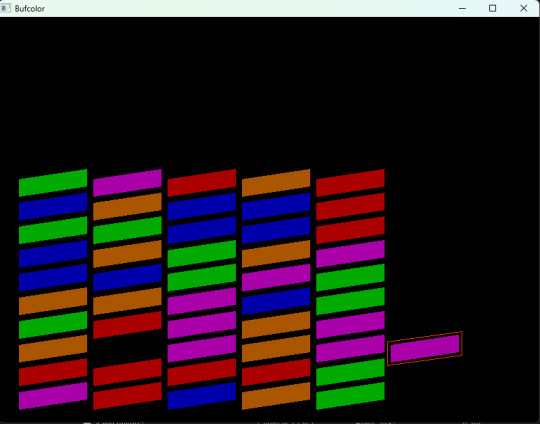
Game about different colors. You need to collect/build columns with colors. Fill every column with its own color. Control with keyboard. Arrows and space. And, also, there is a buffer. It is additional little column, where you put a little cube, that you do not need now. Buffer contains only one little cube. It is need for exchange.
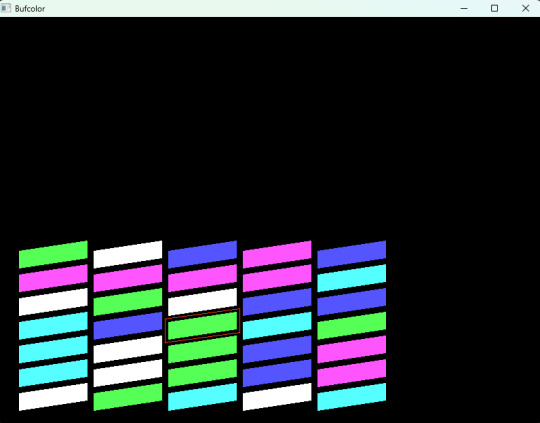
For a long time, I wanted to make lots of small games with Basic. And, this time, I achieve this point. It is, exactly this kind small game. About different colors. Little cubes. There are several columns. For example, 3 or 5.
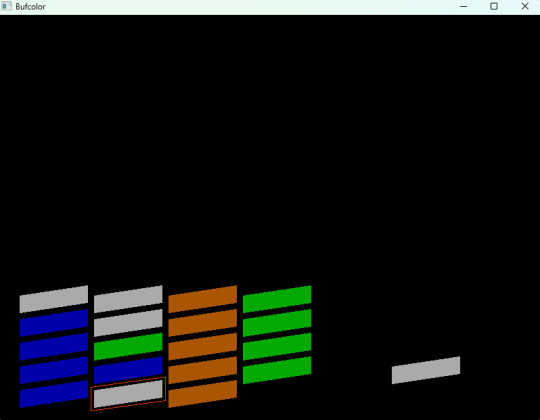
And, also, there is little column number 6 – this is buffer. Withing this you put little cube for exchange. In buffer it can be only one little cube. And you need to set all the colors in columns, except buffer with same colors. First little column with green, second with red. This is about you. You select colors. But only one idea – each column need to be with its own color. With the result. In this case you complete the level.
youtube
This kind of entertainment can be with Ms Dos, Nes, MSX, other 8 bit computers in 80s. It is funny thing, entertainment for engineer at the evening. To collect columns.
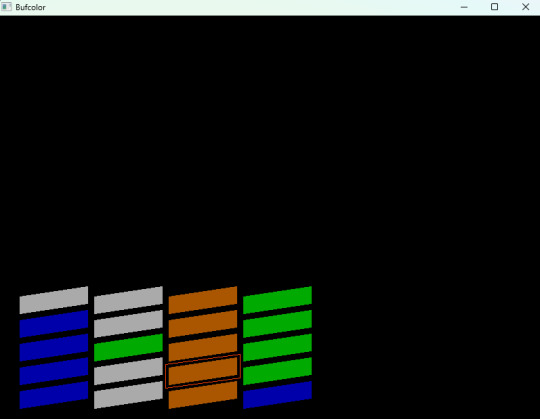
There are several color palette. And two types of visual view. First – it is simple columns. Something like to down view. Everything is straight. Second - it is isometrical. Something like pseudo 3d. With some angle. So this way it is more beautiful. But a little less with understanding. Amount of columns is different from 3 to 5.
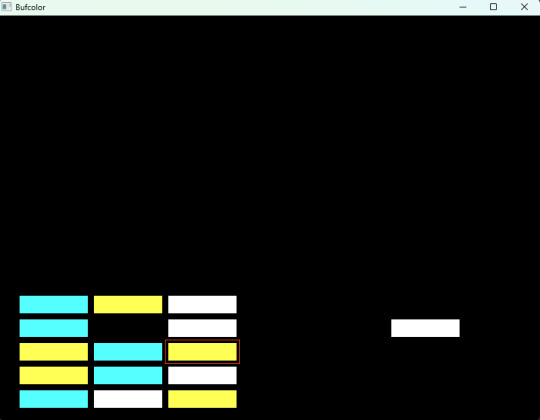
I had for a long time lots of ideas. I think they are for Basic. Ideas for simple games. And so this is a moment of realization – it is here. With using of Basic. This is one more small game.
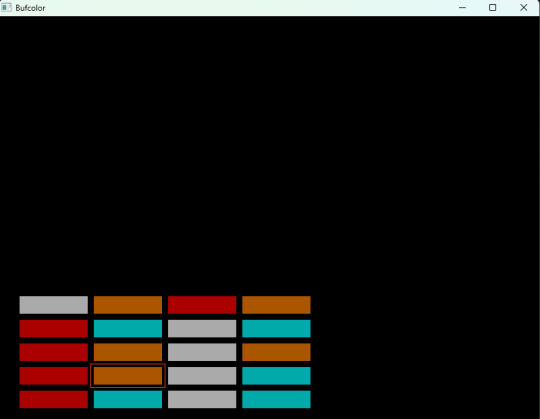
Title is consist with two words. But it is as a one word. New word. Bufcolor. This is after word buffer. And color. This is all the idea. You collect columns with colors. And you need one more little column as buffer for exchange. And here it is to appear a new word – bufcolor.
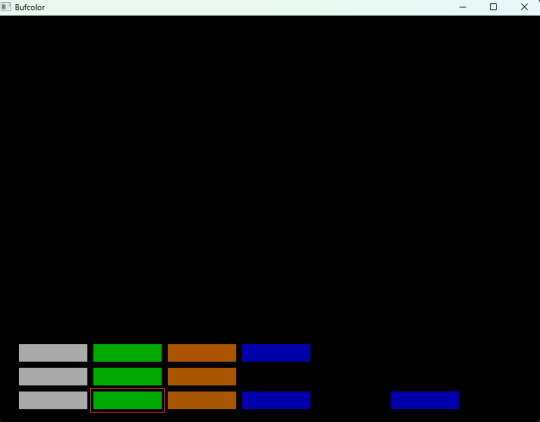
So, how it is cool to know how to programming with Basic. With suing this language you can do realization of lots your ideas. For example, computer games. Spirit of 80s. 8 bit computers. This is just amazing. Once again, little plus goes to side of the Basic. And dialects of Basic. Such as Free Basic. This time for this thing. And amazing code editor – Gvim.
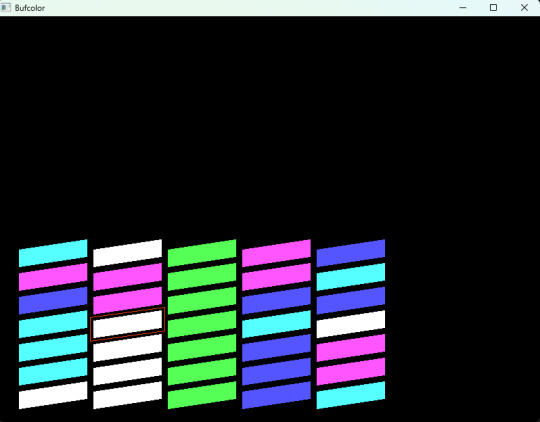
Little columns and colors. And, also, a buffer for 1 little cube. To replace little cubes, when all of them are full in columns. With most beginning, they are filled with chaos order and random order. And you need to sort them. And to have a situation – that every column is with its own one color. You need this buffer. It is very valuable term. Without it - it will be impossible. And buffer -it is so minimal length little column with 1 little cube. You can put in buffer only one little cube. But this is enough. To start to make exchanges between little columns.
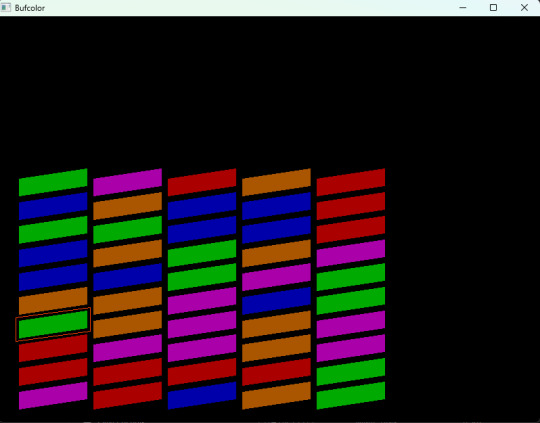
Select little cube. Put in a buffer. Later, select little cube from columns and put it to the empty place. Later, take from buffer little cube, which is already there and put it at the empty place in columns. For example, this way.

Control is simple. With arrows from the keyboard. And space to select a column. Or cancel your selection. Select you made and next do move. This is a fantasy, dream about little columns and different colors. There are max columns with 5. And number six for buffer, always 6 -it is buffer. So, palette is with 5 colors. But colors for little cubes are random way to go. So, every time you launch -you see different color picture. Firs little cube was green.it is now red during next start. And alter blue. So, neat again – some else color.
And yes - have your excellent Basic day!

Basic Pascal version 1.18 "Duckling" – most newest version. In this version there are 4 new games! Puddles at Countryside, Duckling Pseudo 3D, Road to Countryside, Duckling Goes 2D. And even more retro games! It is a pack of retro games with modern versions of Basic and Pascal.
It is now in development new version Basic Pascal pack games. This game will be included in a new version.
Basic Pascal: http://www.dimalink.tv-games.ru/games/basicpascal/index_eng.html Website: http://www.dimalink.tv-games.ru/home_eng.html Itchio: https://dimalink.itch.io/basic-pascal
#retro game#retro programming#qbasic#free basic#arcade#logic#puzzle#8 bit#ms dos#msx#simple game#colors#columns#row#lines#exchange colors#replace colors#buffer with color#1980s#8 bit computers#build collumn#collect colors#sort#devlog#gamedev#Youtube
8 notes
·
View notes
Text
I miss extended ASCII from dos 6.2. I want my lines, and chr 219.
2 notes
·
View notes
Text

@lynxden assuming you meant cpu and not gpu then yes xD
it's basically some of the most memorable and fun moments I've had learning programming has been about doing things the Hard Way™ - doing things manually tends to require you to spend more time thinking about what the computer's actually doing to accomplish the things you ask it to do, which is inevitably a lot more work and often nowhere near as efficient or capable because it's pretty unlikely that you just happen to be smarter than the entire R&D teams they have at Nvidia or Unreal or wherever - but it does force you to learn stuff, at least on a temporary basis.
I mean look, when I first learned how to do proper programming that wasn't just faffing around in Qbasic or whatever, it was on Turbo Pascal in DOS some 25-odd years ago, and I'm kind of forever grateful that when it came to doing graphics, instead of just having us use the built in Borland Graphics API, the teacher taught us how to enter VGA mode 0x13 via direct DOS interrupts, and then how to draw graphics by writing directly to the part of memory that held the screen for that mode.
I still remember the address being 0xA000.
So when I decided I really should take another stab at trying to figure out how the hells matrices work for 2D and 3D transformations a few weeks back, I thought hey why not try doing all of this directly using the Win32 GDI API, BitBlt:ing a framebuffer into the graphics because then I'll also have to re-learn a bunch of stuff that I've more or less forgotten over the years. Plus, there's a part of me that kind of wants to try to take some time to learn at least a little more about software reverse engineering - see if I could ever get to a point where I might be able to look into whether some examples of old games or software that doesn't work so well anymore could be updated to work a bit better.
So, step by step I'm gradually working my way towards a software triangle rasteriser to see about poking around with all of that and I dunno maybe I'll make something small and simple out of it like maybe some vampire survivors-alike or something like the original after burner or maybe even descent or something, who knows.
For now it's mostly a whole lot of googling around, trying to wrap my brain around stuff that feels like I used to find it easier to understand than I do now, and basically just reminding myself why I liked doing some of this stuff, haha.
7 notes
·
View notes
Note
Hi hello, quick question! As a trans woman have you ever been tempted by the call of coding/computer programming?
Hi! Quick answer: Been doing it my whole life. Got started on QBasic in the early 90s. Done little bits of web development and game development since then.
I enjoy it. I cannot run from who I am 🏳️⚧️
#QuinnBasic#quinn codes#quinn lifts#her cat but that’s about it#quinn hills#quinnhills#redacted hills#redactedhills#quinn
61 notes
·
View notes
Text
Functions (and Quantum)
A function, an algorithm, a process, or whatever you'd like to call it; is essentially a black box written by some developer that follows strict rules readily described to a user.
Example; Takes in a value, converts that value into an UTF-8 string of characters and then prints out a human legible variable for use else where.
A function is a "Logical Interpretation" of the underlying hardware. We're not literally feeding the 1s and 0s by hand to the processor, we have automated systems that can translate human understandable logic to the underlying hardware.
In this "Logic" has two definitions. One meaning mental logic, and the other meaning; "Not physically real" or "Not Literal".
Good luck trying to explain that in the future once you get a grasp of coder-culture.
The actual literal physical description is closer to arranged logic gates and processor clockings that make the machine do stuff. Which is *very* hard to keep track of the more complex a system gets.
So our "Programming Language" is a logical construct that gets translated into a "Manual Process" that can be handled at speed that no human can match.
The reason I'm bringing this up is because I watched a Veratasium video recently, and they've been having trouble with the verbage. And I'm trying to explain the bigger picture so that they can be more understandable to both laymen and professionals alike.
qAssembly and qSimulations, currently, offer a [logical interface] to [virtual quantum circuits].
These aren't full-fledged languages *yet* and may barely be defined as an "Assembly Language".
You're literally working with a single particle(electron maybe) and sending it through [quantum logic gates] and trying to figure out how to define what processes each thing is doing, as well as trying create a base-level language with which to speak about Quantum Programming.
Where, in our Python Interface to Q; we're working in a high-level languages, the actual qBasic is several layers less than our binary systems.
Literally organizing and arranging logic gates.
And trying to, literally; define a new mode of thinking around this new technology.
So it'l can be confusing if you're already a full-stack developer and join the quantum environment which is all Physicists and Mathematicians who don't understand Programming , yet understand the quantum-logic better than your average software developer.
The Goal of Quantum, currently, is to end up with a usable qAssembly AND higher-level languages which can be used by future developers to develop... Whatever software we find to be useful with Quantum Systems. Which could be the same as our current binary systems... Or; not. We dunno yet.
It might not even be feasible to use outside a supercooled environment, and if it is; it may not be a long time before we can use a quantum-chip in open-air environments like we use a cellphone.
1 note
·
View note
Link
1 note
·
View note
Text
Liner Notes (May 18th, 2024)
Buckle up—we have a lot to discuss this week. This week’s supporter Q&A post can be found here. If you’d like this newsletter delivered to your inbox each week (it’s free and available to everyone), you can sign up here. A Few Things * One of the recent member-only episodes of the ATP podcast was all about “computer origin stories” or “first computer memories.” I’m roughly the same age as Casey and Marco and their core memories and histories mirrored mine quite a bit. And hearing them talk about their origin stories had me thinking about mine. My first memory of seeing a computer was in first grade when there was a computer in the elementary school library. Maybe an Apple IIGS? It was too long ago and I don’t know for sure. But a found family film makes it pretty clear I spent time with it. (Cool haircut first grade Jason.) I remember playing games like Carmen Sandiego. However, it wasn’t until middle school that my memories of using a computer start to solidify. I can remember vividly the computer labs at Twality Middle School. This is where I can remember my obsession beginning. At some point my parents bought a home computer for “the family.” It was a PC running DOS and Windows 3.1. Look, I’m very clearly old. I’m 41 and remember typing book reports on a typewriter before that computer. And this is when my obsession went into overdrive. I liked playing video games, what kid didn’t?, but I loved trying to figure out how all the software worked. I wanted to learn all the tips and tricks. I wanted to know how the system worked. Which meant I broke that computer. A lot. A lot a lot. I re-installed Windows on that thing from floppy disks more times than I can count. And this was where I first started playing around with Qbasic and did my first “programming.” My first memory of seeing the “internet” was at OMSI. My mom used to take my cousin and me there during summer vacation, and they had a computer lab. I remember downloading Simpsons WAV files and Dark Forces cheat codes, so this would have had to be around 1995, and I would have been around 14. At some point, breaking the family computer became a thing my parents got sick of, and my grandparents helped them purchase my own. Windows 95 and having my computer is where the already probably unhealthy technology obsession went supersonic. And this would be when I started playing around with HTML for the first time and soon after would begin writing what would turn into AbsolutePunk. That’s, best I can remember, my computing origin story. High school was primarily spent tinkering with PCs, installing various Linux distros, and using Windows throughout college. It wouldn’t be until around 2010 that I bought my first Mac. But, that’s probably a story for another time. * Anadivine was one of the hidden gems of the early 2000s scene, and they released a new 2024 remix/remaster of their album, Zoo_. It sounds great, and even if you never checked them out back in the day, it holds up all these years later. Also, if any labels read this and are interested in doing a limited vinyl pressing of the album, I can put you in contact with the band. Just let me know. * Aaron Mook, a contributor to AbsolutePunk and Chorus, has launched a GoFundMe to raise emergency medical funds for his cat. Please take a look if you’re able. In Case You Missed It * Review: Dua Lipa – Radical Optimism * Review: Keane – Hopes & Fears * Review: Broadway Calls – Coming After You * Review: Cold Years – A Different Life * Rise Against Announce New Tour * The Blood Brothers Announce Tour * Interview: Tony Lovato of Mest * The Used Announce B-Side Album * Alice Wallace – “Imposter” (Video Premiere) * Head Automatica – “Bear the Cross” * One OK Rock Announce World Tour * Avril Lavigne Announces Greatest Hits Album * Albums in Stores – May 17th, 2024 Music Thoughts * Lot’s of music to catch up on! Origami Angel released a new single, and it rules. I’m absolutely ready for a new Gami album. Their last… https://chorus.fm/features/articles/liner-notes-may-18th-2024/
0 notes
Text
QBasic Tutorial #56 - Mouse Interface Part 2 - Adding A Button ...
youtube
Post #336: YouTube, School Freeware, QBasic Tutorial, #56 Mouse Interface Part 1, Adding A Button, 2024.
#programming#basic#vintage programming#retro programming#basic programming#iloveprogramming#education#Youtube#school freeware#qbasic for ever#qbasic tutorial#qbasic programming#i love qbasic
3 notes
·
View notes
Text
Tv in constellation
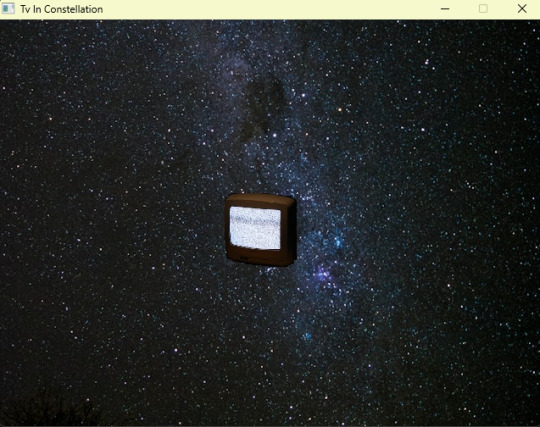
Tele universe - it is true space. Especially, when you moving with using of TV translation with channel or with usage of VHS cassette in a new world. In a far-far galaxy. Or in world of Star Gate. Start Trek. Star Wars. Action movie. Action. All of these - it is so entertaining, and so pulling into. And it drags you in! World of television – universe in a box. High technology.
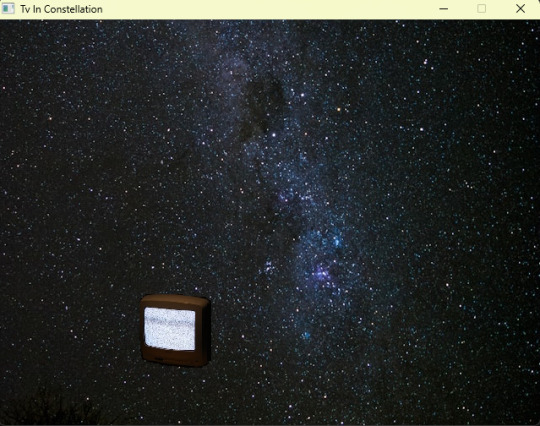
And space. Unlimited space with millions of stars at the sky. Around stars, planets are rotating. And, there are, even, more of them, than stars. More than stars. Nebulas. And galaxies. All of these are unlimited.
Such a feeling of freedom and flight. Television – universe. Magical. Even mystical theme. Modern theme of a modern man. To watch tv. Especially, if it goes there interesting movie or a tv series.

Tv set can be big or not big. Mainly, medium format is rather enough. And, of course, all of these, about a retro theme. TV level of 90s. Or 2000s. Crt tv. Those tv, that you can use to play with cable with three colors in Nes or Sega. And, maybe, even, in first PlayStation.
Whole world – inside television. Mystery. Mystery, which you can look at and, maybe, even, to take a part in format of videogame.
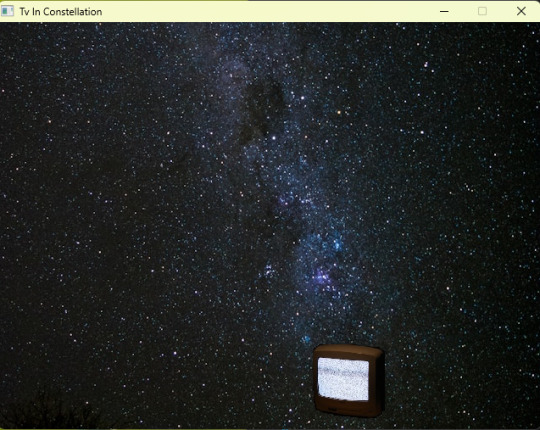
Music theme – it, also, sounds like something mysterious and dragging in. Into the space. Into the tv watching period. Theme is more like stylish and cool 90s or 2000s. When you sit before Tv in the evening. And, try to find something interesting. And, maybe, you can play a console. Music is electronic. Synthesizers. Retrowave. Synthwave.
Retro nostalgia moment. Dedicated to tv. Age of 90s and 2000s. Time, when you spent before tv. While watching some channels and game consoles to play. It is so interesting to turn on television and watch for yourself - does it have for today something interesting! So, this way, one day, I see for the first time Star Gate! They were going by Tv! Or, tv series, or sci fi. Or X-files.
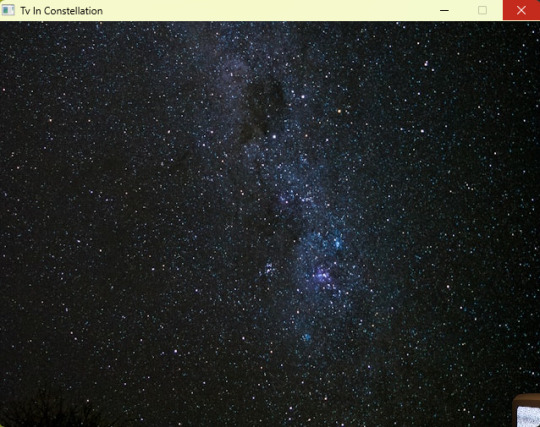
Such an intro. Visual theme. About tv in space. It flies in space. With a random way. And, this is a small program. Program intro. Just, start and watch. At the visual side. With the music. Music is synthesized. Tv is flying in space. Mystery of 20 century. Tv mystery. And space. Tv space. Also, you can see a popular musician by tv. To see cool music clip. Why not – it is a virtual universe. Universe inside universe. Such recursion. As, nesting doll. One inside another one.

Visual fantasy about this theme. A little of mystical. Stars and space. With television, which, simply, is moving there, flying. A little moving, twitching. Stars, stars. To watch a space image – it is, also, standalone thing. And, what is it there amongst the stars? There, it is a tv is flying! So this is a joke answer. It is, simply, intro. It is written with programming language Qb64. In terms of practice and search for a new themes. For point of interest. It is, always, interesting to do something, to try something. Especially, if it goes good. If It turns out. Such idea for simple little programs intros. As intro for some cinema company before movies itself. But, with a form of a small program. With Basic.
It is so nice, in the little evening, to launch little program and to watch, simply, sit and watch! Relax, such modern meditation! Before your eyes – Tv in constellation! In its own constellation. Tele universe. Real one universe. TV moment!

Dima Link is making retro videogames, apps, a little of music, write stories, and some retro more.
WEBSITE: http://www.dimalink.tv-games.ru/home_eng.html ITCHIO: https://dimalink.itch.io/
TUMBLR: https://dimalink.tumblr.com/ BLOGGER: https://dimalinkeng.blogspot.com/ MASTODON: https://mastodon.social/@DimaLink
#retro programming#visual#animation#qbasic#qb64#tv#television#90s aesthetic#constellation#space#application#program#mystery#sci fi#surreal#tv series#crt tv#digital art#future#nostalgia#time for a tv#white noise#intro#strange#tv in space
12 notes
·
View notes
Photo

49 notes
·
View notes
Text
I'm too old for touch typing to have been taught in elementary school. There was one computer on a cart (an Apple ][e) that would be pushed around the school and once a week, it would appear outside your classroom and then a couple students would get to sit in the hall and play with it for a little bit until their turn was up. By the time I was in high school, the touch typing classes that were available for people to learn skills necessary to join a corporate steno pool had been replaced by "keyboarding" classes, which also taught touch-typing, but now on an IBM clackety keyboard instead of on a Selectric typewriter.
We also had an intro to programming class which taught QBASIC and Turbo Pascal by my last year of high school.
So, learning touch typing was AVAILABLE in high school, but it was still something taught in an elective and not taught to everyone as a matter of course.
Which is why I can type, quickly, without looking, but I absolutely do not use the home row and I move my hands too much.
Cursive, however, was taught to everyone beginning in second or third grade, I believe.
i learned both starting in grade 3 and i'm 26
#brin is old#there were video games that only existed to teach typing speed#bombs fell from the top of the screen that had words on them#you stopped the bomb from hitting by typing the words#before they hit the bottom#it was stressful
13K notes
·
View notes
Text
Programming Languages …

Post #73: Programming Languages: C, Small Basic, Java, HTML, Scratch, Rubi, C Sharp, QBasic, Pascal, C ++, Java, PHP and so on ...
#prorammieren#programming languages#programming#small basic#qbasic#scratch#php#c sharp#html#rubi#pascal#visual basic#coding#i love coding#i love programming#i love basic#basic programming#education#coding for kids#i love small basic#basic for ever#microsoft#programmieren
10 notes
·
View notes
Link
In this Article, You Will Get Basic Guide about QBASIC Including:- Some Versions of Qbasic, Basic Elements of QBASIC, operator/Constant, and so on.
1 note
·
View note
Quote
There we have our final product; a webpage with a JavaScript function that calls a web API, which triggers the execution of a Python script in a Docker container, which starts a DOS emulator, itself running QBasic to encode our message into Morse. Pretty straightforward.
Philippe Suter, Serverless QBasic
4 notes
·
View notes
Text
After switching from Apple BASIC (somewhat lame) I found PCs had GW BASIC which was so much more powerful.
QBASIC - free with Windows 95 & 98 were great for teaching programming to kids.
Later.. I loved Visual Basic for the ease of creating a Windows type graphic interface by simply dragging elements like text boxes and buttons onto a 'window' (form) then writing some code.
Programs written in VB6 still work on Windows 10 (not sure about 11) but installing the editor is very hard now.
I do miss the 90s when click able buttons looked like buttons.
No, you have no idea looking at entire screen. Which little icons are actually functional 'buttons' and which are just for information.
(It seems to me there should be a standardized way to indicate this for every interface.)

4K notes
·
View notes